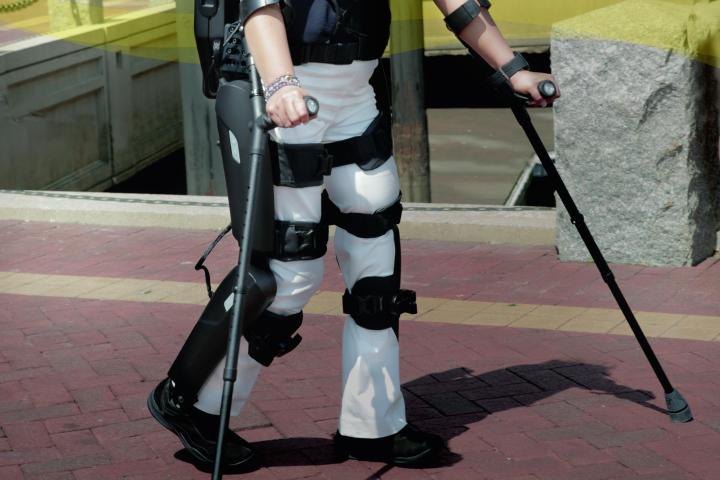
“The launch of the 6.0 offers those with spinal cord injury an exoskeleton design that fits better, walks faster and has better gait control than prior generations of the product,” ReWalk’s CEO Larry Jasinski said in a statement. “The enhanced design of the 6.0 offers highly customized fittings, and software to better match the size and anatomy of each individual user, providing a better walking experience than any prior design and over any other known products in clinical trials around the world.”
It’s got a few new bells and whistles (more on those in a minute), but in terms of operation, the new-and-improved ReWalker works just like its predecessors. Users start by strapping it onto their legs and torso, at which point the system can be switched on via a small wrist-borne controller. Once activated, the ReWalker controls the wearer’s movements by sensing subtle changes in his/her center of gravity. A forward tilt of the upper body, for example, tells the exoskeleton’s motors (located at the hip and knee) to initiate a forward step. If the wearer does this continually, the suit generates a sequence of steps that mimics the natural gait of the legs — allowing them to do things like stand up, turn, and walk normally again.
Version 6.0 of the ReWalker boasts a number of significant improvements — the most obvious of which is probably the form factor. Whereas previous generations of the exoskeleton required the user to carry the battery around in a backpack-like apparatus, the battery on the new ReWalker is mounted just above the users hips. According to ReWalk, this new design “removes weight from the shoulders; gives the user freedom for clothing choice and movement; and the sleek redesign of the strapping and padding provides the users with an easier and faster capacity to put the system on and take it off.”
It’s also designed to fit better than earlier models — regardless of the user’s height, weight, and limb dimensions. The ReWalk Personal 6.0 System is fitted to the user’s measurements and custom ordered for each individual, providing a more precise fit that better aligns with the user’s joints. This, in addition to the suit’s reduced weight, allows users to walk at speeds as high as 1.6 miles per hour (2.6 km/h) — the fastest speed of any commercially available exoskeleton, according to ReWalk.
Earlier this year, the FDA gave its seal of approval to a prior version of the ReWalk system for people with spinal cord injuries, and cleared it for both clinical and personal use. It’s still the only exoskeleton to receive that wide-ranging clearance thus far, meaning it’s the first exoskeleton to make it out of the hospital and into the wild. They don’t come cheap though. The ReWalk 6.0 system currently carries a list price of $77,000, so unless it’s covered by insurance, the exoskeleton will likely be out of reach for most people.



